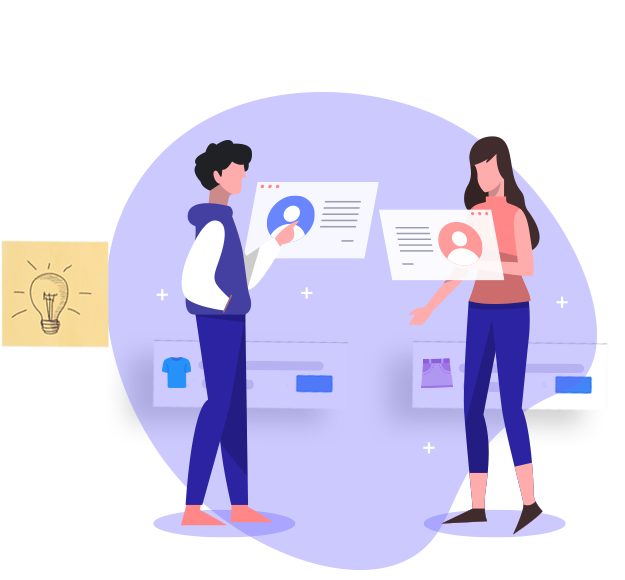In today’s fast-paced digital landscape, successful marketing strategies rely on understanding your audience like never before. One of the fundamental tools at the disposal of marketers is audience segmentation. This article will delve into the intricacies of audience segmentation marketing, exploring its importance, methods, and how it can significantly enhance your marketing efforts.
What Is Audience Segmentation Marketing?

Audience segmentation is the practice of dividing your target audience into smaller, more manageable groups based on shared characteristics and behaviors. These segments can include demographics, psychographics, behavior patterns, and geographic locations.
Why Is Audience Segmentation Important?
Audience segmentation is crucial because it allows you to:
- Increase Relevance: Tailor your marketing messages to specific segments, making them more relevant to their needs and preferences.
- Boost Engagement: Engage with your audience on a more personal level, increasing the chances of conversion.
- Optimize Resources: Allocate your resources more effectively by focusing on high-potential segments.
- Enhance ROI: Maximize your return on investment by targeting the right people with the right message.
Types of Audience Segmentation
1. Demographic Segmentation
Demographic segmentation divides the audience based on quantifiable factors like age, gender, income, and education. It provides a basic understanding of who your customers are.
2. Psychographic Segmentation
Psychographic segmentation delves into the psychological aspects of your audience, including values, interests, lifestyles, and attitudes. It helps in creating emotionally resonant marketing campaigns.
3. Behavioral Segmentation
Behavioral segmentation categorizes the audience based on their past behaviors, such as purchase history, online interactions, and brand loyalty.
4. Geographic Segmentation
Geographic segmentation considers the geographical location of your audience, which is vital for businesses with location-specific services or products.
The Process of Audience Segmentation
Effective audience segmentation involves several steps:
1. Data Collection
Gather data from various sources, including surveys, website analytics, and social media insights.
2. Data Analysis
Analyze the collected data to identify patterns, commonalities, and differences among your audience.
3. Segmentation
Group your audience into distinct segments based on the data analysis, ensuring each segment is homogenous within and heterogeneous between.
4. Targeting
Select which segments to target based on their relevance to your marketing goals.
5. Positioning
Craft marketing messages and strategies tailored to each segment’s unique needs and preferences.
Benefits of Audience Segmentation
Audience segmentation offers numerous benefits:
- Increased conversion rates
- Improved customer retention
- Higher customer satisfaction
- Efficient resource allocation
- Enhanced brand loyalty
Challenges
While audience segmentation can be highly effective, it also comes with challenges such as data privacy concerns and the need for accurate data.
Examples of Successful Audience Segmentation
Companies like Amazon, Netflix, and Spotify have excelled in audience segmentation, delivering personalized recommendations and experiences.
Tools for Effective Audience Segmentation
Various marketing tools and software can aid in audience segmentation, including customer relationship management (CRM) systems and analytics platforms.
Integrating Audience Segmentation into Your Marketing Strategy
To succeed in audience segmentation, it must be integrated into your overall marketing strategy, ensuring consistency across all touchpoints.
Measuring the Effectiveness of Audience Segmentation
Regularly assess the performance of your segmented campaigns and adjust your strategies based on the results.
Common Mistakes to Avoid
Avoid pitfalls like over-segmentation, neglecting smaller segments, or making assumptions about your audience without proper research.
Future Trends
The future of audience segmentation lies in advanced data analytics, artificial intelligence, and machine learning, enabling even more precise targeting.
Case Study: Leveraging Audience Segmentation to Drive Marketing Success
In this competitive landscape, understanding your target customers and categorizing them is essential. As it provides data about the different customers’ characteristics and their interactions with your business. To be able to adjust your brand to match the different audience segments, and match their different need. Categorizing the customers in specific segments based on their characteristics helps in delivering personalized experiences. Leading to a boost in engagement, sales, and customer satisfaction.
The Challenge
A large retailer was facing challenges in reaching its goals with their marketing strategies. Having a lot of marketing efforts but without personalization leads to a waste of resources. As their marketing efforts were too broad, this led to a lack of engagement with their target customers. They needed a better way to understand their customers’ behaviors and preferences, to create suitable marketing campaigns that match their interests.
Implementing Audience Segmentation
The retailer decided to doubt the audience segmentation strategy, to be able to divide the data and use advanced analytics tools. So they started by dividing their audience into specific segments that share characteristics. Also, this segmentation depended on key factors such as demographics, behaviors, interests, and geographic locations.
- Demographic Segmentation
First, the brand started to segment its customers based on some basic information such as age, gender, income, and educational background. This helped the brand to know who the targeted customers are and what products they like more.
- Behavioral Segmentation
Then the brand started to analyze the customers’ purchasing behaviours and online interactions with the brand. And they segmented the customers into highly loyal customers, frequent shoppers, and those who tended to purchase during specific seasons or promotions. Based on these valuable insights, they tailor their marketing messages to increase customer traffic.
- Psychographic Segmentation
The retailer depended on psychological segmentation to understand its customers’ values, lifestyles, and attitudes. By analyzing the social media content and conducting surveys, they reached many valuable insights. They found specific interests in sustainability, fitness, and technology. This helped the brand to create more suitable marketing campaigns to target the customers’ interests.
- Geographic Segmentation
As the retailer was operating in different regions and cultures, the geographic segmentation was essential. The messages were tailored based on the customer’s location to make sure the products are reaching the right target audience.
Results of Audience Segmentation
After implementing the audience segmentation strategy, the brand noticed valuable results.
- Increased Engagement: The personalized campaign led to an increase in customer engagement with the brand. Noticing an increase in the opening and click-through rate on social media and emails.
- Boosted Conversion Rates: By delivering the right message for the high-potential segment, the conversion rate increased. As the customers are more likely to buy when the products match their interests and needs.
- Improved Customer Retention: They tailored the brand loyalty program to match the right segment. Offering the right deals based on segment-specific behaviors created a stronger connection with the brand.
Conclusion
Audience segmentation is a cornerstone of modern marketing. By understanding your audience at a granular level, you can create highly effective, personalized marketing campaigns that resonate with your customers.
If you’re ready to take your marketing to the next level and explore the power of audience segmentation, we invite you to request a demo from AIM Technologies today. Our cutting-edge solutions can help you harness the full potential of audience segmentation and drive exceptional results for your business.
FAQs
Is audience segmentation only for large businesses?
- No, audience segmentation benefits businesses of all sizes. Small businesses can use it to make the most of limited resources.
How often should I update my audience segments?
- Regularly. Customer behaviors and preferences change, so it’s essential to keep your segments up to date.
Can I use audience segmentation for email marketing?
- Absolutely. Email campaigns tailored to specific segments often yield higher open and click-through rates.
Is audience segmentation a one-time process?
- No, it’s an ongoing strategy. Continuously monitor and adjust your segments to stay relevant.
Where can I learn more about audience segmentation tools and techniques?
- Many online courses and resources can help you dive deeper into audience segmentation and its applications.




